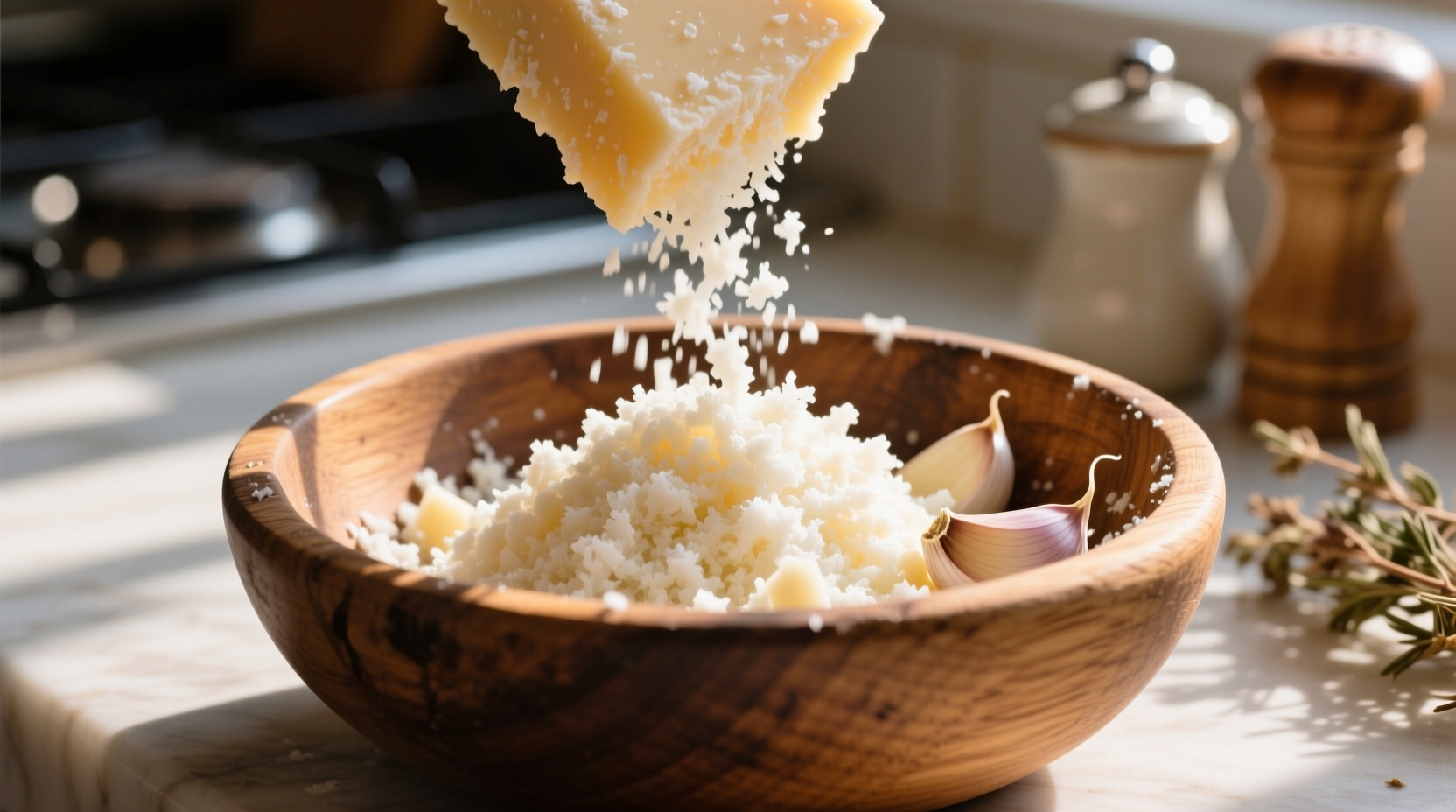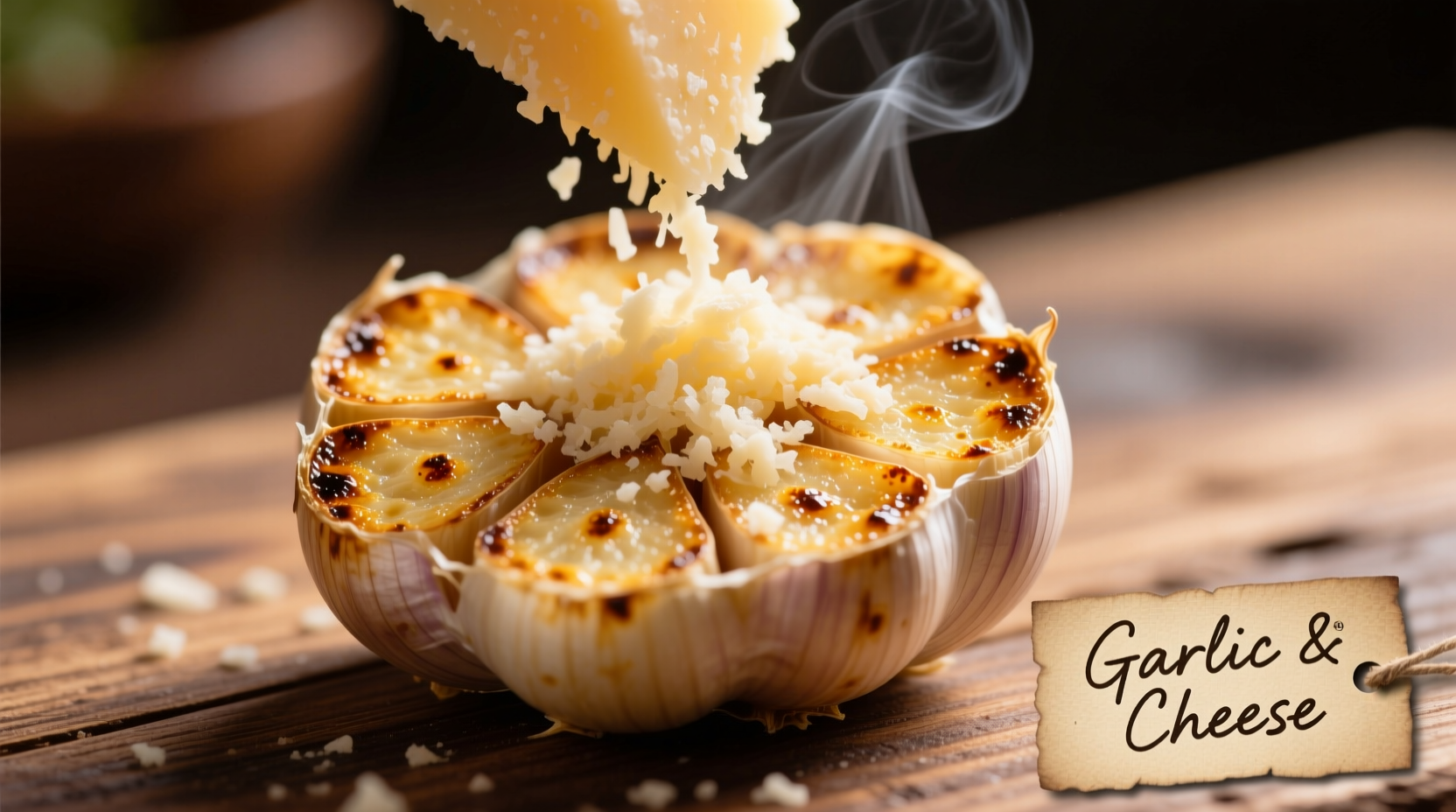Parmesan garlic is a classic flavor pairing in Italian cuisine where freshly grated Parmigiano-Reggiano cheese combines with garlic to create a savory, umami-rich base for numerous dishes. The combination works because garlic's pungent sulfur compounds complement parmesan's glutamates and casein proteins, creating a synergistic flavor profile that enhances pasta, vegetables, meats, and more.
The Science Behind This Perfect Pairing
Understanding why parmesan and garlic create such magic together starts with food chemistry. Garlic contains allicin, a sulfur compound that delivers its characteristic pungency when crushed. Parmesan cheese, particularly authentic Parmigiano-Reggiano aged 24 months or longer, develops high concentrations of glutamic acid through proteolysis during aging. This creates natural umami that perfectly balances garlic's sharpness.
According to research published in the Journal of Agricultural and Food Chemistry, the casein proteins in aged cheeses like parmesan bind with garlic's volatile compounds, mellowing harsh notes while preserving aromatic complexity. This chemical interaction explains why the combination tastes more harmonious than either ingredient alone.

Mastering Preparation Techniques
How you prepare each component dramatically affects the final flavor. Professional chefs follow these precise methods:
| Preparation Method | Garlic Result | Parmesan Result | Best For |
|---|---|---|---|
| Raw, minced fine | Sharp, pungent bite | Intense salty finish | Salad dressings, finishing oils |
| Gentle sauté (30 sec) | Sweet, mellow flavor | Creamy texture | Pasta sauces, vegetable dishes |
| Infused in oil (cold) | Subtle aromatic notes | Crunchy texture | Dipping oils, bread toppings |
| Roasted whole cloves | Deep caramelized sweetness | Melts into sauce | Hearty meat dishes, creamy sauces |
When Parmesan Garlic Works Best (And When It Doesn't)
This classic combination excels in specific culinary contexts but has clear limitations. Understanding these boundaries prevents flavor disasters:
- Ideal applications: Pasta dishes (especially fettuccine, spaghetti), roasted vegetables (asparagus, broccoli), chicken cutlets, and breadcrumb toppings
- Problematic pairings: Delicate seafood (overpowers subtle flavors), sweet dishes, and acidic tomato sauces (creates bitter notes)
- Critical ratio: Maintain 3:1 parmesan to garlic ratio by volume for balanced flavor (exceeding 1:1 creates overwhelming pungency)
- Temperature sensitivity: Never add parmesan directly to high-heat cooking oil (causes clumping and bitterness)
5 Signature Dishes That Showcase This Pairing
1. Classic Garlic Parmesan Pasta
The foundation dish demonstrates perfect technique. Cook spaghetti al dente, reserving 1 cup pasta water. Sauté 3 minced garlic cloves in 3 tbsp olive oil over low heat for 30 seconds until fragrant but not browned. Remove from heat, add cooked pasta and ½ cup reserved water, then gradually incorporate 1 cup freshly grated parmesan until emulsified. Finish with black pepper and additional cheese.
2. Parmesan Garlic Roasted Asparagus
Toss 1 lb asparagus with 2 tbsp olive oil, 4 minced garlic cloves, salt, and pepper. Roast at 400°F for 12-15 minutes until tender-crisp. Sprinkle with ¼ cup grated parmesan during last 3 minutes of cooking. The high heat melts the cheese into a delicate crust while preserving the vegetable's texture.
3. Garlic Parmesan Breadcrumbs
Create an exceptional topping by combining 1 cup panko breadcrumbs, ½ cup parmesan, 2 tsp minced garlic, and 2 tbsp melted butter. Bake at 350°F for 8-10 minutes until golden. This versatile topping works on pasta bakes, casseroles, and roasted vegetables.
4. Parmesan Garlic Compound Butter
Mix 1 stick softened butter with 3 tbsp grated parmesan, 2 minced garlic cloves, 1 tbsp chopped parsley, and lemon zest. Roll into a log, chill, and slice for immediate flavor infusion on steaks, roasted potatoes, or crusty bread. The fat in butter carries both flavors evenly while mellowing garlic's sharpness.
5. Creamy Garlic Parmesan Risotto
The ultimate comfort food showcases this pairing's depth. Sauté 3 minced garlic cloves in butter, add 1½ cups arborio rice, and toast for 2 minutes. Gradually add 4 cups warm chicken stock while stirring constantly. When nearly done, remove from heat and stir in 1 cup parmesan until creamy. The starch in rice binds with cheese proteins for perfect texture.
Avoiding Common Preparation Mistakes
Even experienced cooks make these critical errors with parmesan garlic combinations:
- Using pre-grated cheese: Anti-caking agents prevent proper melting and create grainy sauces. Always grate fresh from a block.
- Overheating garlic: Garlic burns at 350°F, turning bitter. Sauté over low heat just until fragrant (about 30 seconds).
- Adding cheese to boiling liquid: High heat causes cheese proteins to seize. Remove from heat before incorporating parmesan.
- Using garlic powder: Lacks the enzymatic complexity of fresh garlic. Never substitute in dishes where this pairing is central.
Storage and Shelf Life Guidelines
Proper storage maintains flavor integrity:
- Whole garlic bulbs last 3-5 months in cool, dark, well-ventilated spaces
- Minced garlic keeps 1 week refrigerated in airtight container
- Freshly grated parmesan lasts 2 weeks refrigerated in wax paper (not plastic)
- Never freeze parmesan for cooking applications (alters texture and flavor release)
- Pre-mixed parmesan garlic blends lose potency within 3 days











 浙公网安备
33010002000092号
浙公网安备
33010002000092号 浙B2-20120091-4
浙B2-20120091-4